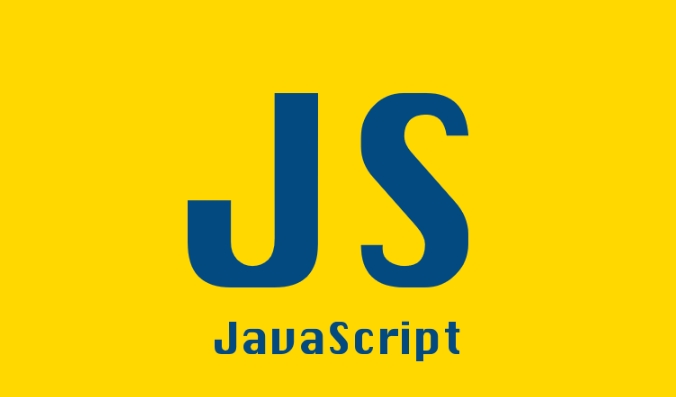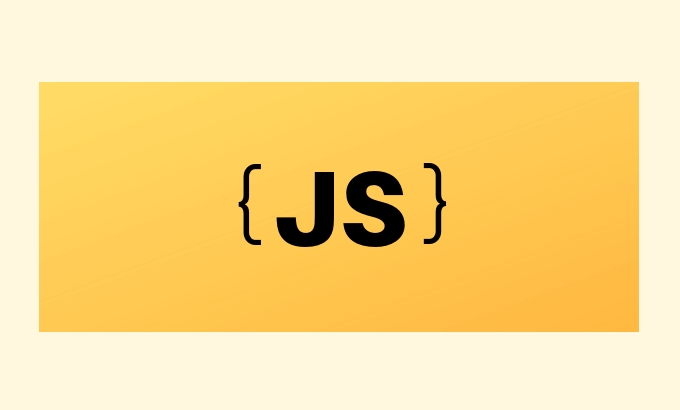How to implement a simple routing system in client-side JavaScript?
Jul 22, 2025 am 03:45 AMTo build a single page application routing system that does not rely on the complete framework, client routing can be implemented through the browser's History API. The specific steps are as follows: 1. Use pushState() and replaceState() to modify the URL without refreshing the page; 2. Define the routing map table and write the corresponding view rendering function; 3. Write the navigate() function to call the corresponding processing function according to the current path; 4. Intercept the link click event, block the default behavior and call pushState() to update the URL; 5. Listen to the popstate event to support the browser's forward and backward function; 6. Set container elements in HTML, and dynamically render different views by modifying its innerHTML; 7. Add 404 pages to handle unmatched routes, thereby building a basic but complete client routing system.

When you want to build a single-page application (SPA) without relying on a full framework like React Router or Vue Router, implementing a simple routing system using client-side JavaScript is totally doable. The core idea is to change what the user sees based on the URL, without reloading the page. Let's break it down.

How client-side routing works
Client-side routing relies on the browser's History API — specifically pushState() and replaceState() — to manipulate the URL without triggering a page reload. When the URL changes, your app checks the current path and updates the content accordingly.
Here's the basic flow:

- User clicks a link or navigates directly to a URL
- JavaScript intercepts the navigation
- Based on the path, the app loads or displays the right content
- The URL in the address bar changes, but the page doesn't reload
This is how SPAs simulate multi-page behavior without server-side routing.
Setting up routes manually
To build a simple router, you can define a map of routes and associate each with a function that renders the corresponding view or component.

Here's a minimum example:
const routes = {
'/': homePage,
'/about': aboutPage,
'/contact': contactPage
};Then, you need a function that checks the current URL and runs the matching route handler:
function navigate() {
const path = window.location.pathname;
const routeHandler = routes[path] || notFoundPage;
routeHandler();
}This function should run both when the page loads and when the URL changes (more on that in the next section).
Handling URL changes without page reloads
To respond to in-app navigation (like when a user clicks a link), you need to:
- Prevent default link behavior
- Use
history.pushState()to update the URL - Call your
navigate()function
Here's how you can do it:
document.addEventListener('click', (e) => {
if (e.target.matches('a')) {
e.preventDefault();
const path = e.target.getAttribute('href');
window.history.pushState(null, '', path);
navigate();
}
}); You should also listen for the popstate event so that the back/forward buttons work:
window.addEventListener('popstate', navigate);
This lets your app respond to the user navigating through history without full page loads.
Rendering views dynamically
You don't need a framework to render views dynamically. A simple way is to have a container element in your HTML and update its inner HTML or content based on the route.
For example:
<div id="app"></div>
And in your route handler:
function homePage() {
document.getElementById('app').innerHTML = '<h1>Home Page</h1>';
}If you're loading content from the server or using templates, you could fetch data or load partials inside this function.
Bonus: Add a 404 page
It's good practice to handle unknown routes. You can do this by adding a fallback function:
function notFoundPage() {
document.getElementById('app').innerHTML = '<h1>404 - Page Not Found</h1>';
}And then setting it as the default handler when no route matches.
That's the basic idea. It doesn't need to be complicated — just track the URL, match it to a route, and show the right content.
You can expand from here by adding nested routes, route parameters, lazy loading, or even integrating with a component system.
But for small apps or experiments, this setup works well and keeps things light.
Basically that's it.
The above is the detailed content of How to implement a simple routing system in client-side JavaScript?. For more information, please follow other related articles on the PHP Chinese website!

Hot AI Tools

Undress AI Tool
Undress images for free

Undresser.AI Undress
AI-powered app for creating realistic nude photos

AI Clothes Remover
Online AI tool for removing clothes from photos.

Clothoff.io
AI clothes remover

Video Face Swap
Swap faces in any video effortlessly with our completely free AI face swap tool!

Hot Article

Hot Tools

Notepad++7.3.1
Easy-to-use and free code editor

SublimeText3 Chinese version
Chinese version, very easy to use

Zend Studio 13.0.1
Powerful PHP integrated development environment

Dreamweaver CS6
Visual web development tools

SublimeText3 Mac version
God-level code editing software (SublimeText3)
 How to make an HTTP request in Node.js?
Jul 13, 2025 am 02:18 AM
How to make an HTTP request in Node.js?
Jul 13, 2025 am 02:18 AM
There are three common ways to initiate HTTP requests in Node.js: use built-in modules, axios, and node-fetch. 1. Use the built-in http/https module without dependencies, which is suitable for basic scenarios, but requires manual processing of data stitching and error monitoring, such as using https.get() to obtain data or send POST requests through .write(); 2.axios is a third-party library based on Promise. It has concise syntax and powerful functions, supports async/await, automatic JSON conversion, interceptor, etc. It is recommended to simplify asynchronous request operations; 3.node-fetch provides a style similar to browser fetch, based on Promise and simple syntax
 JavaScript Data Types: Primitive vs Reference
Jul 13, 2025 am 02:43 AM
JavaScript Data Types: Primitive vs Reference
Jul 13, 2025 am 02:43 AM
JavaScript data types are divided into primitive types and reference types. Primitive types include string, number, boolean, null, undefined, and symbol. The values are immutable and copies are copied when assigning values, so they do not affect each other; reference types such as objects, arrays and functions store memory addresses, and variables pointing to the same object will affect each other. Typeof and instanceof can be used to determine types, but pay attention to the historical issues of typeofnull. Understanding these two types of differences can help write more stable and reliable code.
 JavaScript time object, someone builds an eactexe, faster website on Google Chrome, etc.
Jul 08, 2025 pm 02:27 PM
JavaScript time object, someone builds an eactexe, faster website on Google Chrome, etc.
Jul 08, 2025 pm 02:27 PM
Hello, JavaScript developers! Welcome to this week's JavaScript news! This week we will focus on: Oracle's trademark dispute with Deno, new JavaScript time objects are supported by browsers, Google Chrome updates, and some powerful developer tools. Let's get started! Oracle's trademark dispute with Deno Oracle's attempt to register a "JavaScript" trademark has caused controversy. Ryan Dahl, the creator of Node.js and Deno, has filed a petition to cancel the trademark, and he believes that JavaScript is an open standard and should not be used by Oracle
 What is the cache API and how is it used with Service Workers?
Jul 08, 2025 am 02:43 AM
What is the cache API and how is it used with Service Workers?
Jul 08, 2025 am 02:43 AM
CacheAPI is a tool provided by the browser to cache network requests, which is often used in conjunction with ServiceWorker to improve website performance and offline experience. 1. It allows developers to manually store resources such as scripts, style sheets, pictures, etc.; 2. It can match cache responses according to requests; 3. It supports deleting specific caches or clearing the entire cache; 4. It can implement cache priority or network priority strategies through ServiceWorker listening to fetch events; 5. It is often used for offline support, speed up repeated access speed, preloading key resources and background update content; 6. When using it, you need to pay attention to cache version control, storage restrictions and the difference from HTTP caching mechanism.
 Handling Promises: Chaining, Error Handling, and Promise Combinators in JavaScript
Jul 08, 2025 am 02:40 AM
Handling Promises: Chaining, Error Handling, and Promise Combinators in JavaScript
Jul 08, 2025 am 02:40 AM
Promise is the core mechanism for handling asynchronous operations in JavaScript. Understanding chain calls, error handling and combiners is the key to mastering their applications. 1. The chain call returns a new Promise through .then() to realize asynchronous process concatenation. Each .then() receives the previous result and can return a value or a Promise; 2. Error handling should use .catch() to catch exceptions to avoid silent failures, and can return the default value in catch to continue the process; 3. Combinators such as Promise.all() (successfully successful only after all success), Promise.race() (the first completion is returned) and Promise.allSettled() (waiting for all completions)
 Leveraging Array.prototype Methods for Data Manipulation in JavaScript
Jul 06, 2025 am 02:36 AM
Leveraging Array.prototype Methods for Data Manipulation in JavaScript
Jul 06, 2025 am 02:36 AM
JavaScript array built-in methods such as .map(), .filter() and .reduce() can simplify data processing; 1) .map() is used to convert elements one to one to generate new arrays; 2) .filter() is used to filter elements by condition; 3) .reduce() is used to aggregate data as a single value; misuse should be avoided when used, resulting in side effects or performance problems.
 JS roundup: a deep dive into the JavaScript event loop
Jul 08, 2025 am 02:24 AM
JS roundup: a deep dive into the JavaScript event loop
Jul 08, 2025 am 02:24 AM
JavaScript's event loop manages asynchronous operations by coordinating call stacks, WebAPIs, and task queues. 1. The call stack executes synchronous code, and when encountering asynchronous tasks, it is handed over to WebAPI for processing; 2. After the WebAPI completes the task in the background, it puts the callback into the corresponding queue (macro task or micro task); 3. The event loop checks whether the call stack is empty. If it is empty, the callback is taken out from the queue and pushed into the call stack for execution; 4. Micro tasks (such as Promise.then) take precedence over macro tasks (such as setTimeout); 5. Understanding the event loop helps to avoid blocking the main thread and optimize the code execution order.
 Understanding Event Bubbling and Capturing in JavaScript DOM events
Jul 08, 2025 am 02:36 AM
Understanding Event Bubbling and Capturing in JavaScript DOM events
Jul 08, 2025 am 02:36 AM
Event bubbles propagate from the target element outward to the ancestor node, while event capture propagates from the outer layer inward to the target element. 1. Event bubbles: After clicking the child element, the event triggers the listener of the parent element upwards in turn. For example, after clicking the button, it outputs Childclicked first, and then Parentclicked. 2. Event capture: Set the third parameter to true, so that the listener is executed in the capture stage, such as triggering the capture listener of the parent element before clicking the button. 3. Practical uses include unified management of child element events, interception preprocessing and performance optimization. 4. The DOM event stream is divided into three stages: capture, target and bubble, and the default listener is executed in the bubble stage.






